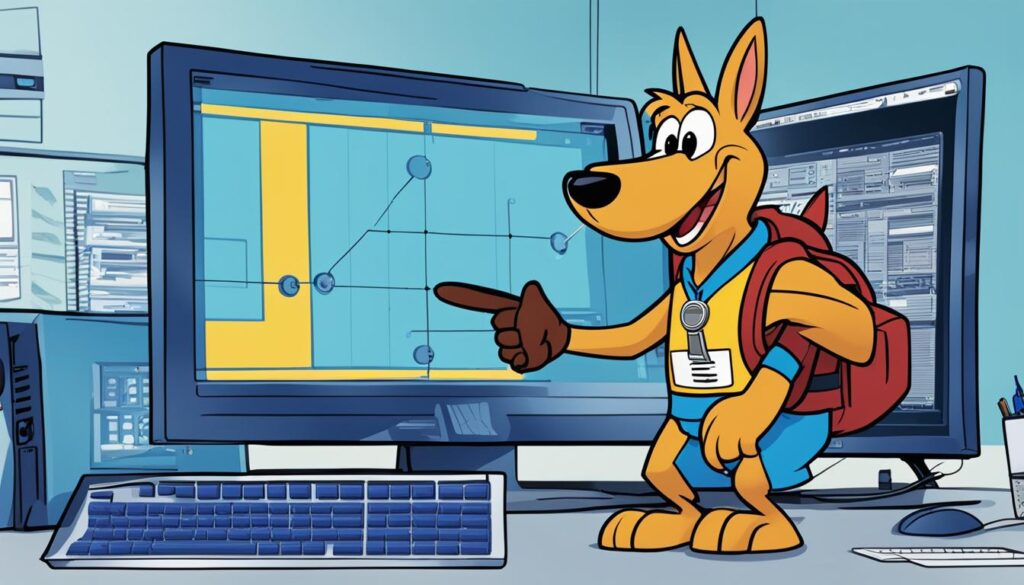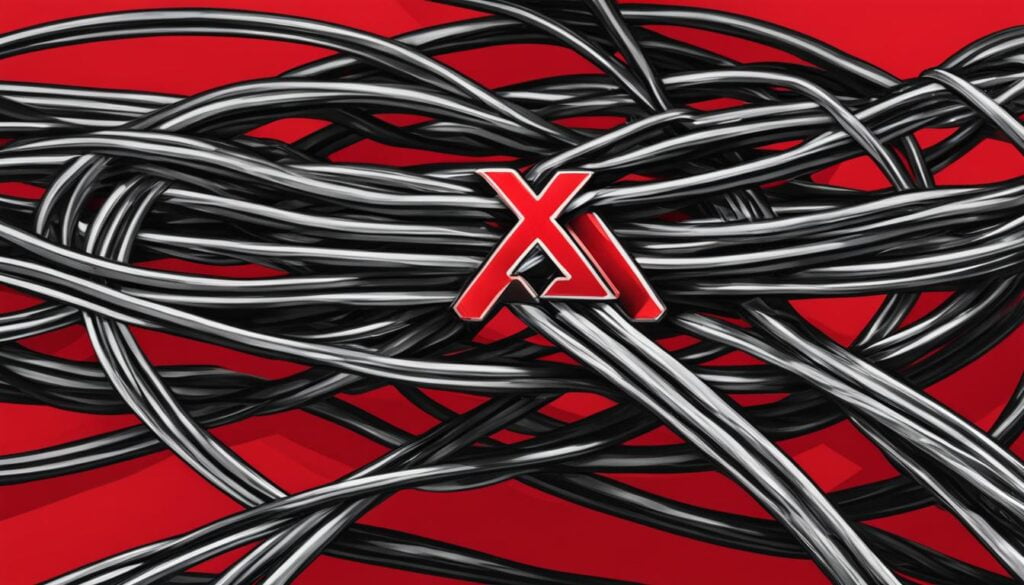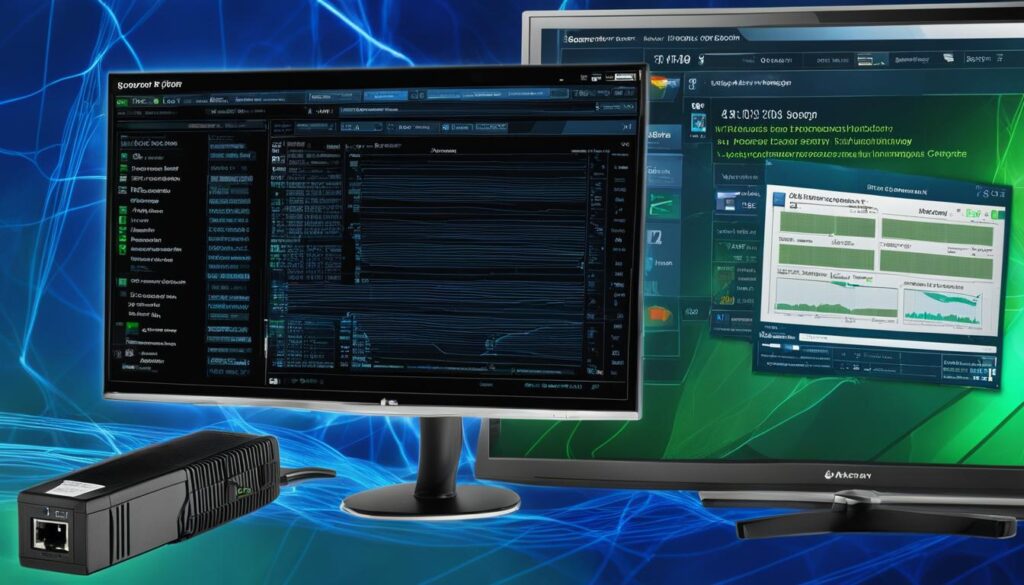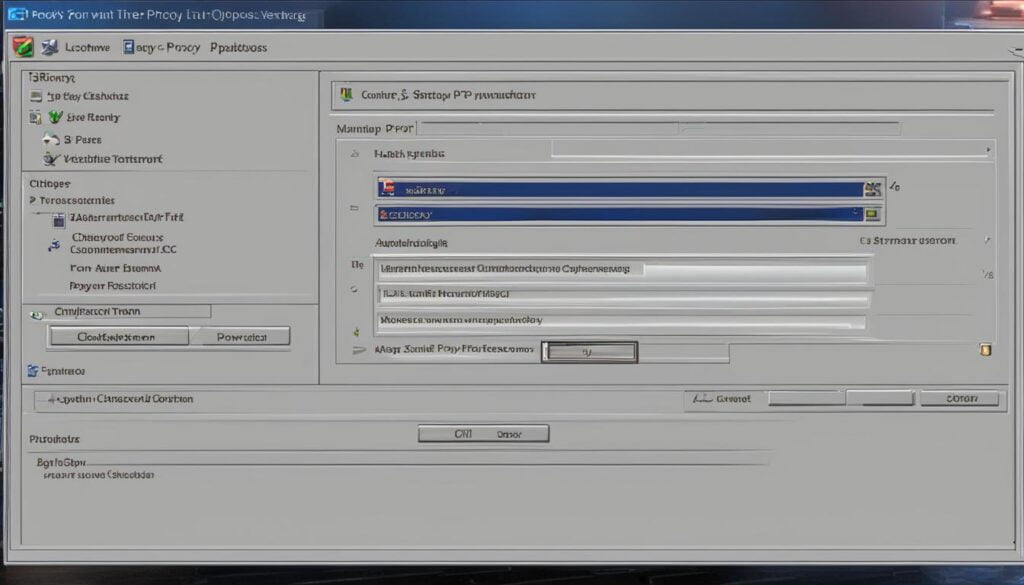Contents
- 1 Check the Ethernet Cable and Port
- 2 Run Network Troubleshooter
- 3 Update Your Ethernet Adapter’s Driver
- 4 Disable Your VPN
- 5 Check Power Management Settings
- 6 Check Your Fixed IP Settings
- 7 Check LAN Proxy Settings
- 8 Fix Your Ethernet Connection
- 9 Conclusion
- 10 FAQ
- 10.1 What should I check first if my ethernet is not working on Windows 10?
- 10.2 How can I run the network troubleshooter on Windows 10?
- 10.3 How do I update the driver for my ethernet adapter on Windows 10?
- 10.4 Should I disable my VPN software if I’m experiencing ethernet connection issues?
- 10.5 How can I check and change the power management settings for my ethernet adapter?
- 10.6 How do I check if my fixed IP settings are causing issues with my ethernet connection?
- 10.7 How can I disable the LAN proxy settings that may be affecting my ethernet connection?
- 10.8 What are some common causes of ethernet connection issues on Windows 10?
- 10.9 What should I do if none of these solutions fix my ethernet connection issues on Windows 10?
If you’re experiencing common issues with ethernet not working on Windows 10, there are several quick fixes and tips you can try to restore your connection. From checking the ethernet cable and port to running network troubleshooter and updating your ethernet adapter’s driver, this article will provide you with step-by-step solutions to resolve ethernet connection problems on Windows 10.
Key Takeaways: Ethernet Not Working On Windows 10
- Check the ethernet cable and port for any damages or loose connections.
- Run the network troubleshooter in Windows 10 to identify and fix any network adapter issues.
- Update your ethernet adapter’s driver to ensure it is up to date and compatible with Windows 10.
- Disable any VPN software that may be interfering with your ethernet connection.
- Check the power management settings for your ethernet adapter to ensure it is not being turned off to save power.
Check the Ethernet Cable and Port
One of the first things to check when facing ethernet connection issues is the ethernet cable and port. An old or damaged cable can cause an unstable connection, so it’s recommended to check the ethernet cable first. Try using a spare cable or connecting the faulty one to another device to determine if the cable is the source of the problem.
Additionally, it’s important to check the ethernet port for any signs of damage. Inspect the port for looseness or dirt and clean it if necessary. A loose ethernet port can also cause connectivity problems. If you find that the port is damaged and cannot be repaired, you can consider using a USB-to-Ethernet adapter as an alternative.
If you suspect that you may have a malfunctioning ethernet cable or a loose ethernet port, it’s crucial to address these issues as they can significantly impact your network connection. Taking the time to check and possibly replace the cable or port can save you from further troubleshooting and frustration.
Run Network Troubleshooter
When facing network adapter issues and ethernet connection problems on Windows 10, running the network troubleshooter can be a helpful step in diagnosing and resolving the issue. The troubleshooter is a built-in tool designed to identify and fix various network-related problems.
To access the network troubleshooter, follow these steps:
- Click on the Start menu and select Settings.
- In the Settings menu, click on Update & Security.
- Select Troubleshoot from the left-hand menu.
- Scroll down and click on Additional troubleshooters.
- Under Get up and running, click on Network Adapter. This will launch the network troubleshooter specifically for network adapter-related issues.
The network troubleshooter will now scan your system for any problems that may be causing the unstable ethernet connection. It will provide recommendations and attempt to automatically fix the issues it detects. If the troubleshooter identifies an outdated, corrupt, or missing ethernet driver as the cause of the problem, it will prompt you to update the driver.
Updating Your Ethernet Driver
Updating your ethernet driver is an essential step in resolving network adapter issues. An outdated or corrupt driver can lead to connectivity problems and unstable ethernet connections.
To update your ethernet driver, follow these steps:
- Open the Device Manager by right-clicking on the Start menu and selecting Device Manager.
- In the Device Manager window, expand the Network adapters section.
- Locate your ethernet adapter in the list of network adapters.
- Right-click on the ethernet adapter and select Update driver.
- Choose the option to Search automatically for drivers. Windows will search for and install any available updates for your ethernet adapter.
After the driver update is complete, restart your computer and check if the ethernet connection is now stable.
If you still experience network adapter issues or the network troubleshooter does not resolve the problem, there may be other factors contributing to the unstable ethernet connection. Further troubleshooting steps may be required to identify and address these issues.

| Common Causes of Network Adapter Issues | Solutions |
|---|---|
| Outdated ethernet driver | Update the driver through Device Manager |
| Corrupt ethernet driver | Reinstall the ethernet driver or update through Device Manager |
| Missing ethernet driver | Download and install the latest driver from the manufacturer’s website or update through Device Manager |
Update Your Ethernet Adapter’s Driver
Outdated or corrupt ethernet adapter drivers can lead to various connectivity issues. To ensure a stable ethernet connection, it is important to regularly update and maintain your ethernet adapter’s driver.
To update the driver, follow these simple steps:
- Access the Device Manager by searching for it in the Start menu.
- In the Device Manager, expand the Network adapters menu to find the ethernet driver.
- Right-click on the driver and select Update driver.
- Choose the option to Search automatically for drivers.
- The Device Manager will search for and install any available updates for your ethernet adapter.
After the driver update is complete, restart your device to check if the ethernet connection is now stable.
It is recommended to regularly update your ethernet adapter driver to ensure optimal performance and compatibility with your network environment.
Hidden Network Adapters
In some cases, you may have hidden network adapters that are causing issues with your ethernet connection. To check for hidden adapters, follow these steps:
- In the Device Manager, click on View and select Show hidden devices.
- Expand the Network adapters menu to view all the hidden network adapters.
- If you find any hidden adapters related to your ethernet connection, right-click on them and select Uninstall.
After uninstalling the hidden network adapters, restart your device to see if the ethernet connection stabilizes.
Common Symptoms of Outdated or Corrupt Network Drivers
| Symptom | Description |
|---|---|
| Slow or intermittent internet connection | Outdated or corrupt drivers can result in sluggish or unstable internet connectivity. |
| Frequent network disconnections | Network drivers that are not up-to-date or functioning properly can cause frequent dropouts in the network connection. |
| Inability to connect to specific networks | Outdated drivers may not support the latest network protocols or security standards, preventing connection to certain networks. |
| Unresponsive or slow network interface | If your ethernet adapter is slow to respond or becomes unresponsive, it could be due to outdated or corrupt drivers. |
Updating your ethernet adapter’s driver is an essential step in troubleshooting and resolving ethernet connection issues. By keeping your drivers up-to-date, you can ensure a stable and reliable network experience.
Disable Your VPN
If you have VPN software installed on your Windows 10 device, it may be causing conflicts with your ethernet connection. To troubleshoot this issue, try disabling or removing the VPN software.
In the Network & Internet settings, navigate to the VPN section and disconnect or remove the manual VPN connection. Additionally, disable or remove any VPN extensions from your internet browser, as they can also interfere with the ethernet connection.

Recommended Actions:
- Disable or remove VPN software from your Windows 10 device.
- In the Network & Internet settings, disconnect or remove the manual VPN connection.
- Delete or disable VPN extensions from your internet browser.
| Pros | Cons |
|---|---|
| Resolves conflicts between VPN software and ethernet connection. | Disabling VPN software may limit your ability to access certain websites or services that require a VPN. |
| Improves stability and performance of your ethernet connection. | Disabling VPN software may compromise your online privacy and security. |
I recommend disabling your VPN software and removing any manual VPN connections or extensions from your internet browser to troubleshoot ethernet connection issues on your Windows 10 device.
Check Power Management Settings
Windows 10’s power management settings can sometimes limit the functionality of the ethernet connection to save battery. If you’re using a laptop with low battery or have enabled Battery Saver, it’s worth checking the power management settings for the ethernet adapter.
To check the power management settings:
- Open the Device Manager by right-clicking on the Start button and selecting Device Manager from the context menu.
- In the Device Manager, expand the Network adapters menu.
- Right-click on your device’s ethernet adapter and select Properties.
- In the Properties window, go to the Power Management tab.
- Ensure that the option to “Allow the computer to turn off this device to save power” is unchecked.
After making this change, restart your PC and check if the ethernet connection remains stable.

Check Your Fixed IP Settings
Using a fixed or static IP address can have advantages, but if not configured correctly, it can also cause instability in your ethernet network. To ensure a stable ethernet connection, it’s important to check your fixed IP settings and make any necessary adjustments.
To disable fixed IP connections, follow these steps:
- Go to the Network & Internet settings on your Windows 10 device.
- Select the Ethernet section.
- Check the IP settings. If you see a message indicating manual IP assignment, click the Edit button.
- From the drop-down menu, select Automatic (DHCP) to enable automatic IP assignment.
- Save the changes.
By selecting Automatic (DHCP), your IP address will be assigned automatically, ensuring a more stable ethernet connection. Verify if the ethernet connection is now stable and test your internet connectivity.
Why are Fixed IP Settings important?
Fixed IP settings, also known as static IP addresses, allow devices on your network to have consistent and predictable IP addresses. This can be useful for certain scenarios, such as remote access or hosting services. However, if not properly managed, fixed IP settings can lead to conflicts and connectivity issues.
Dynamic Host Configuration Protocol (DHCP) is the recommended setting for most users. With DHCP enabled, your device will automatically obtain an IP address from the network’s DHCP server. This ensures that each device is assigned a unique IP address and minimizes the risk of IP conflicts.
Table: Pros and Cons of Fixed IP Settings
| Pros | Cons |
|---|---|
| Suitable for hosting services or remote access. | Can cause IP conflicts if not properly managed. |
| Provides consistent and predictable IP addresses. | Requires manual configuration and management. |
| May offer more control over network traffic. | Requires technical knowledge for configuration. |
It’s important to evaluate your specific network requirements and consider the potential benefits and drawbacks of using fixed IP settings before making changes to your configuration.
Check LAN Proxy Settings
If your PC or laptop uses a proxy server over LAN, it can interfere with the Ethernet connection. To fix this issue, you need to disable the LAN proxy settings. Here’s how:
- Open the Run dialog by pressing Win+R on your keyboard.
- Type inetcpl.cpl in the Run dialog and click OK.
- In the Internet Properties window, go to the Connections tab.
- Under the Local Area Network (LAN) settings, select the checkbox that says “Use a proxy server for your LAN”.
- Click OK to save the changes.
By disabling the proxy server for your LAN, you can ensure that it does not interfere with your Ethernet connection. This setting will not apply to dial-up or VPN connections, allowing you to have a seamless and stable connection.

Note: The image above illustrates the LAN proxy settings in the Internet Properties window.
Fix Your Ethernet Connection
When it comes to troubleshooting ethernet connection issues on Windows 10, there can be multiple causes that interfere with your network. In addition to the specific troubleshooting steps mentioned earlier, it’s important to consider common causes such as hardware issues, ISP service problems, corrupt or outdated drivers, and even malware infections. By systematically applying the suggested fixes and tips, you can successfully resolve your ethernet connection issues and restore stable internet access.
Hardware Issues
Hardware problems can often play a role in ethernet connection issues. Ensure that all cables are securely connected and free from damage. Check for any loose or damaged ports, and clean them if necessary. Swapping out cables or using a USB-to-Ethernet adapter can also help determine if the issue lies with the hardware.
ISP Service Problems
Before troubleshooting your ethernet connection, consider checking with your Internet Service Provider (ISP) to ensure there are no known service outages or maintenance work in your area. ISP-related issues can affect your connection and may require their assistance to resolve.
Corrupt or Outdated Drivers
Corrupt or outdated ethernet drivers can cause instability in your network connection. It’s recommended to update your ethernet adapter’s driver by accessing the Device Manager. Look for the Network adapters menu, right-click on the ethernet driver, and select “Update driver.” Choose the option to search automatically for drivers to ensure you have the latest software.
Malware Infection
Malware infections can disrupt your ethernet connection and compromise the security of your system. Regularly scanning your computer with reliable antivirus software can help detect and remove any malware that could be causing network issues. Keep your antivirus software up to date for effective protection.
By addressing these potential causes, you can improve your chances of resolving ethernet connection problems on Windows 10. Remember to document any changes made and test your connection after each fix. If further assistance is needed, consult additional resources or seek professional support.
| Common Causes of Ethernet Issues | Recommended Solutions |
|---|---|
| Hardware issues | Check cables and ports for damage, clean ports if necessary, consider using a USB-to-Ethernet adapter |
| ISP service problems | Contact your Internet Service Provider to check for any known issues or outages |
| Corrupt or outdated drivers | Update ethernet adapter’s driver through the Device Manager |
| Malware infection | Scan your computer with reliable antivirus software to detect and remove any malware |
Conclusion
Troubleshooting ethernet connection issues on Windows 10 can be frustrating, but by following the steps outlined in this guide, you should be able to resolve common issues and restore a stable ethernet connection. From checking cables and ports to updating drivers and disabling VPN software, each step plays a crucial role in identifying and fixing ethernet problems.
Remember to test your connection after each fix and consult additional resources or seek assistance if needed. With these tips, you’ll be back online and enjoying a stable ethernet connection on Windows 10 in no time.
FAQ
What should I check first if my ethernet is not working on Windows 10?
Check the ethernet cable and port for any damage or issues. Try using a spare cable or connecting the faulty one to another device to determine if the cable is the source of the problem. Additionally, inspect the ethernet port for any signs of damage or dirt and clean it if necessary.
How can I run the network troubleshooter on Windows 10?
To run the network troubleshooter, go to the Update & Security settings and navigate to the Troubleshoot section. Select the network adapter troubleshooter and follow the prompts to scan for and fix any ethernet connection issues.
How do I update the driver for my ethernet adapter on Windows 10?
Access the Device Manager by searching for it in the Start menu. Expand the Network adapters menu, right-click on the ethernet driver, and select Update driver. Choose the option to search automatically for drivers, and the Device Manager will install any available updates for your ethernet adapter.
Should I disable my VPN software if I’m experiencing ethernet connection issues?
Yes, disabling or removing VPN software can resolve conflicts with your ethernet connection. Go to the Network & Internet settings, navigate to the VPN section, and disconnect or remove the manual VPN connection. Additionally, disable or remove any VPN extensions from your internet browser.
How can I check and change the power management settings for my ethernet adapter?
In the Device Manager, under the Network adapters menu, open the properties of your ethernet adapter. Go to the Power Management tab and ensure that the option to allow the computer to turn off the device to save power is unchecked.
How do I check if my fixed IP settings are causing issues with my ethernet connection?
Go to the Network & Internet settings, select the Ethernet section, and check the IP settings. If there is a Manual IP assignment message, click the Edit button, and select Automatic (DHCP) from the drop-down menu.
How can I disable the LAN proxy settings that may be affecting my ethernet connection?
Open the Run dialog by pressing Win+R, then type inetcpl.cpl and click OK. In the Internet Properties window, go to the Connections tab and select LAN settings. Uncheck the option to use a proxy server for your LAN, and click OK to save the changes.
What are some common causes of ethernet connection issues on Windows 10?
Common causes include hardware issues, ISP service problems, corrupt or outdated drivers, and even malware infections. It’s important to systematically apply the suggested fixes and tips to identify and resolve the specific cause of your ethernet connection problem.
What should I do if none of these solutions fix my ethernet connection issues on Windows 10?
If none of the solutions mentioned here resolve your ethernet connection issues, it’s recommended to consult additional resources, seek assistance from technical support, or contact your internet service provider for further troubleshooting and support.
